After one of the wettest California years on record, the rain and winter season have show us what amount of rain Mother Nature can drop a lot of water in a short period. During the winter season and cold and wet winter months, we often forget about termites and other household pests unless we see them swarming or trailing inside our home.
But rainfall can bring back dampness into crawlspaces, basements and interior wall voids. Particularly during winter months, but also during the spring moisture is a leading cause of ants, termites, wood boring beetles, dry rot and mildew or even mold in houses. While remaining inside, we often forget about clogged gutters, downspouts, surface drains and underground drain lines. When roof, gutters and downspouts are obstructed by tree debris and roofing granules, and when surface drain grates and underground drain lines are clogged with dirt or debris, this can cause water to pool around the structure and seep into basements, substructure areas and under concrete slabs.
Water in and around a home can cause many problems. Here are a few examples of problems caused by inadequate drainage and excessive moisture:
- Seepage and dampness into substructure areas
- Surface water and damp substructure soil
- Fungus, mildew and mold in sub-areas, walls, floors and closets
- Deformation, rippling and buckling of hardwood floors
- Staining, musty smell and mildew in carpeting and vinyl flooring
- Rusting of earthquake anchors bolts, ties, nails and carpet strips
- Soil erosion and liquefaction around piers, foundations and slabs
- Settlement or foundations, slabs, patios, decks and concrete pads
- Bowed and slopping interior floors
- Door and window swelling preventing proper closing and operation
- Cracking in sheet rock covered walls and ceilings
- Gaps and voids around molding and trims at ceiling, windows and doors
- Surface water in contact with heating ducts and plenums
- Sump pumps overwhelmed or failing with too much seepage
- Rusting re-bars within foundations can cause concrete spalling
- Gutters overflowing and rotting eaves, rafter tails and siding
- Gutters and downspouts rusting more quickly and leaking
- Electrical cables corroding with surface water in sub-areas
- Data cables (TV, internet, alarm, etc.) failing or short-circuiting
- Plumbing pipes corroding and leaking with surface water and damp soil
- Wood boring beetles infesting damp substructure wood members
- Termites infesting wood members within sub-areas, floors and walls
- Argentine ants moving nests out of substructure soil to wall voids.
- Rodents moving from flooded substructure areas into walls and ceilings
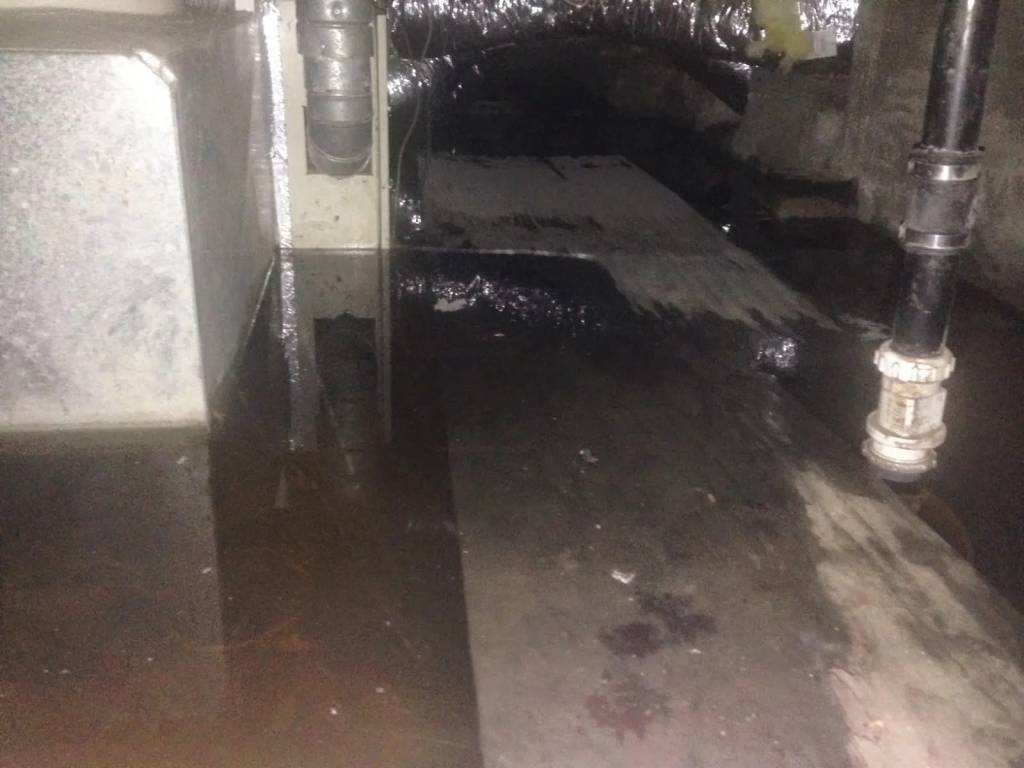
So the winter rainy season is great times to have your house inspected. Many of the issues mentioned above are not visible or discernible during the dry season and particularly during a drought year.
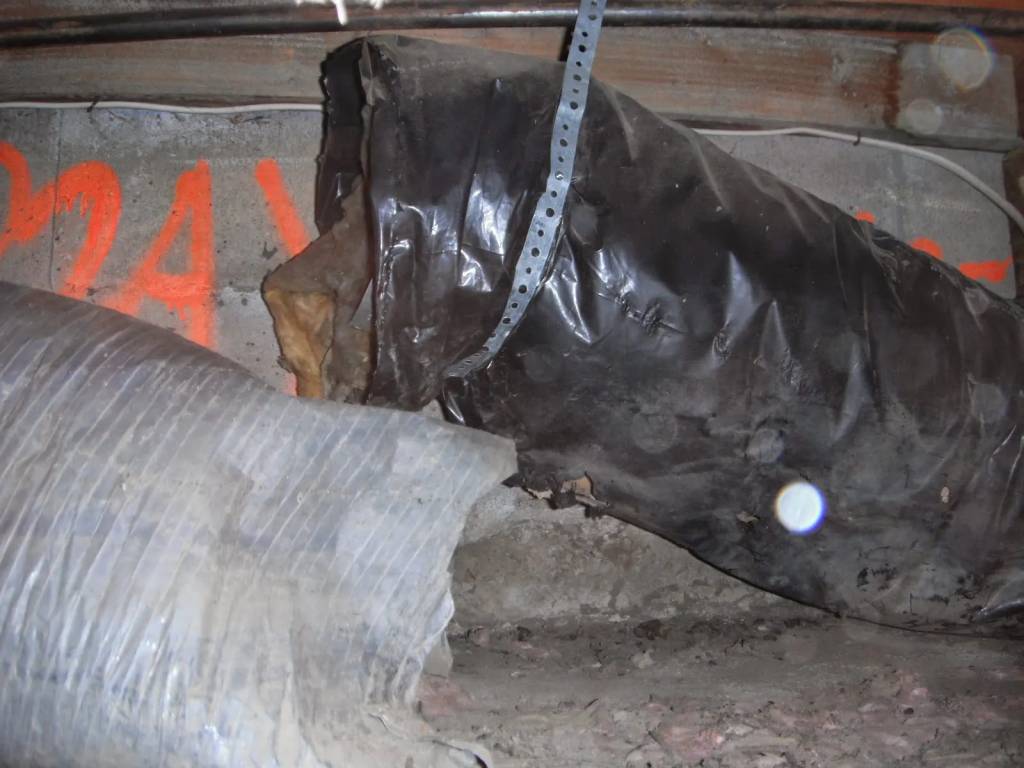
During winter inspections we often discovered defective sump pumps, flooded heating ducts and heater plenums, electrical and data cables submerged in surface water or corroding on damp soil. An inspection can also reveal plumbing leaks, sewer lines discharging in sub-areas, disconnected or leaking heating ducts as well as leaking showers, toilet stools, sinks, refrigerators, washing machines and dyer vents.

These along with wet, damp, sagging or downed insulation contribute to higher utility bills. With every inch of rainfall, the roof surface of a typical 1800 square foot home will discharge well over 1200 gallons of roof water against the foundation. Depending on the topography, soil condition and drainage installation seepage can vary greatly. With adequate drainage and ventilation, a typical substructure area should remain dry or experience minor soil dampness with no surface water pooling anywhere. But if drainage is insufficient or non-existent substructure areas can fill up quickly and remains flooded for weeks or even months.
Moisture is the main cause for infestation and infection in homes. Insects and fungus need air, food and water to survive and will more likely infest and cause damage in homes with excessive moisture conditions. Water can come from above (gravity), from below (capillary), from thermal exchange (condensation) or a combination resulting in high moisture content inside homes. During cold winter months, bathroom windows are kept closed during and after showers adding more moisture to interiors. All this and moisture from surface water and wet soil in sub-areas can add over 47 quarts of humidity to the daily 20 quarts produced by a household of 4. Modern homes are well insulated and heaters cannot dry interiors and walls like older wood stoves and fireplaces did before.
Moisture intrusion can come from cracks and voids to exterior wood and stucco walls, aging paint, siding, inadequate or missing flashing around windows, doors, exterior wood trim and protrusions. Leaking or incorrectly installed windows, doors and deck attachments can contribute to leaks and moisture intrusion. Older roof, flashing, gutters & downspouts can also cause leaks and moisture intrusion. Finally vegetation growth against the structure can raise humidity lasting for long periods in some areas.
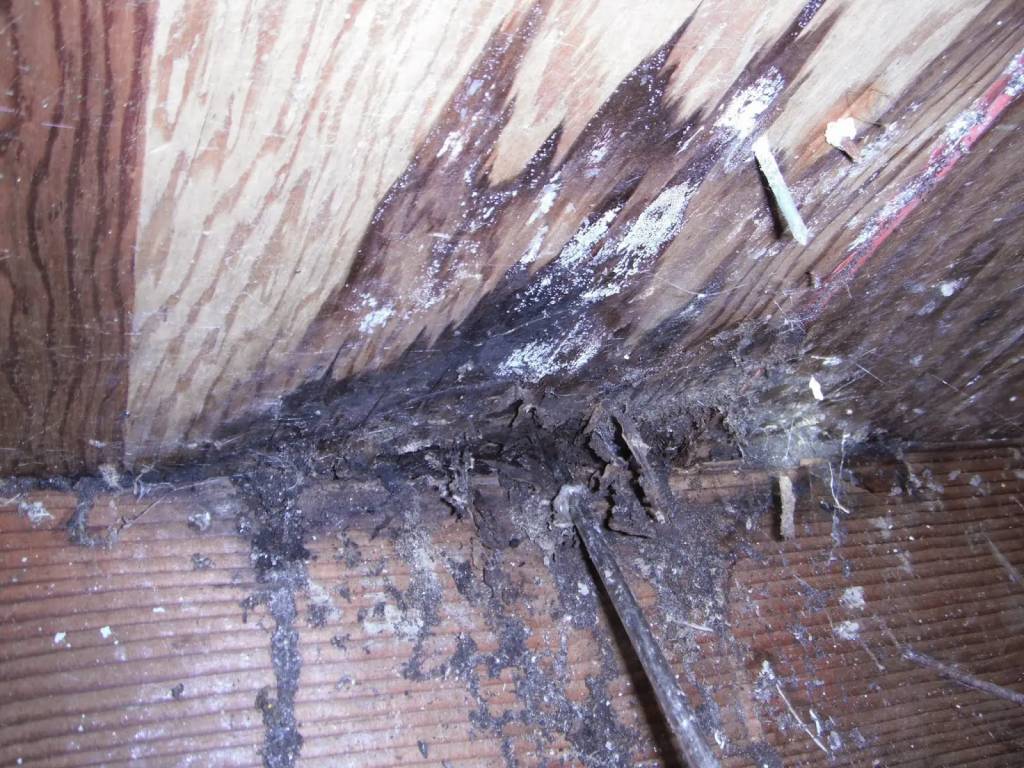
Health Risks and Hazards: Excessive moisture in homes can also cause health problems. Beyond smell and discomfort, allergies and some diseases are more prominent in a humid environment. Fungi infestation cause not just wood decay damage but mildew and mold inside but also in enclosed areas like cabinets, closets and wall voids. It also develop behind beds, furniture and beneath carpeting. Bathrooms, kitchens and the northern side of homes are more prone to fungal activity. Over time, some mildew and mold can carry airborne spores that may cause health hazards to some allergic persons.
Maintenance: Owners should periodically check and report to the appropriate professionals surface water and rust stains, high humidity and damp smell, pest infestation as well as settlement cracks and damaged or deformed floors. Calling a trained and experienced licensed professional is the best way to prevent problems and obtain an expert’s recommendation. It is also important to observe the surrounding environment and location of the building that may subject the structure to adverse conditions.
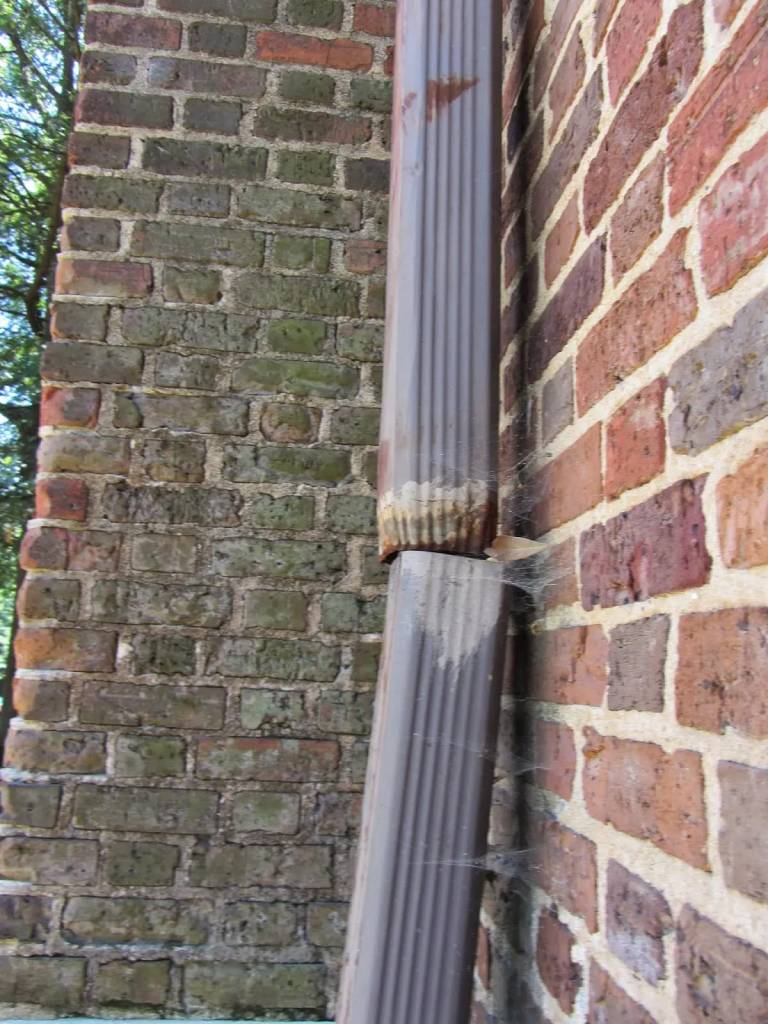
Prevention: Installing drainage within and around the structure is a must. At the very least, grading to slope away from the structure and downspouts should be fitted with extensions channeling water away from the structure, not just a few feet. Ideally underground downspout drain lines and French drains should take water to the street or a sump pump well and away from the foundations.

Installing a vapor barrier on substructure soil will create a drier environment. But this will only work if drainage is adequate and functional. Periodically serviced and operational sump pumps are critical in areas where water accumulates below grade, such as in deep crawl spaces, basements and on low level grounds. Adequate insulation with proper ventilation will also help deter excessive moisture in crawlspaces and bathrooms. Aerating the interior and adequate ventilation is also critical in tight and enclosed areas such as closets and storage rooms. Properly flashed windows, doors and roofs are crucial as well as caulked and painted areas are also critical. Finally, all parts and equipment found in a home need periodic servicing and inspection.

Conclusion: If it doesn’t look, feel or smell right… it probably isn’t! During the course of property maintenance, observe the grounds and structure. Keep your home dry and aerate interiors as often as possible. Along with treatments and repairs, winter is the perfect time to install vapor barrier installation and extensions to downspouts to improve moisture conditions and keep sub-areas dry.
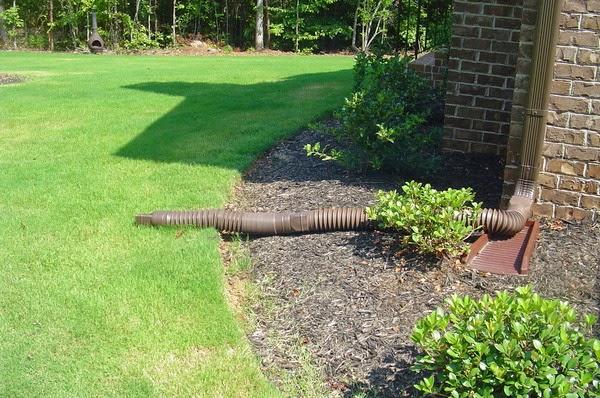
BUENA VISTA COMPANY has a licensed professional inspect your home. It is economically wise and may prevent costly repairs. Remember: An ounce of prevention is worth a pound of correction. Maintain your property in good working condition, replace aging and failing components and have all critical equipment routinely checked and serviced by licensed or certified professionals.

